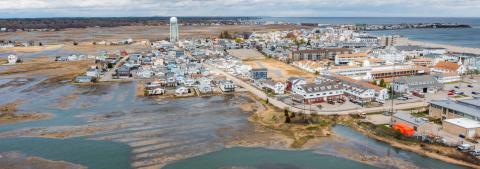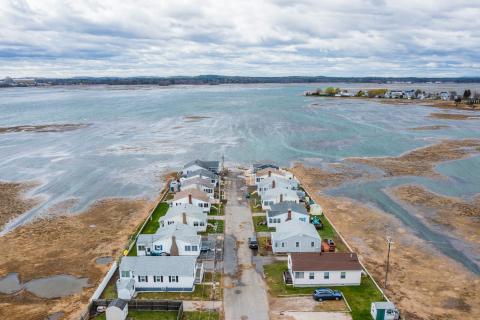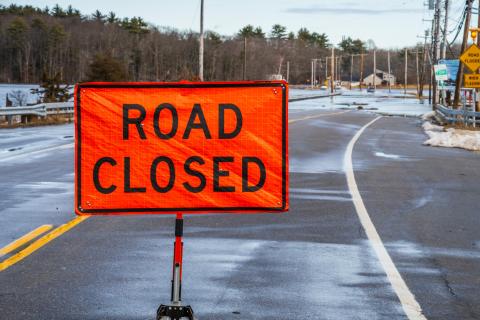
What is Flood Ready Neighborhoods?
Flood Ready Neighborhoods provides direct support and services to neighborhoods experiencing impacts from coastal and stormwater flooding and erosion. Residents work closely with Flood Ready Neighborhoods staff to identify and implement strategies that increase flood resilience by protecting coastal ecosystems, infrastructure, and communities.
Flood Ready Neighborhoods is focused at the neighborhood-scale. Staff primarily support neighborhoods with diverse income levels and a range of forms of land tenure. Programming in each participating neighborhood is responsive to residents' local knowledge, shared assets, social networks, and resilience priorities. This community-centered approach to technical assistance ultimately seeks to ensure residents have the resources and agency for well-being now and in the future.
A set of principles guide Flood Ready Neighborhoods staff in their engagement with each neighborhood. Please reach out to Alyson Eberhardt at alyson.eberhardt@unh.edu to request a copy of these guiding principles.
Flood Ready Neighborhoods (FRN) has worked in six neighborhoods that experience various flood risks (current and/or future), including coastal, riverine, and stormwater related flooding. Current FRN neighborhoods are in Portsmouth, Hampton, Seabrook, and Exeter.
Flood Ready Neighborhoods (FRN) staff seek to work with a diversity of neighborhoods in the region – residents who are renters and homeowners, experiencing inland and coastal flooding, and living across the socioeconomic spectrum.
During the FRN pilot, neighborhoods were initially identified through a desktop analysis. This analysis combined geophysical and socioeconomic data from FEMA special flood hazard area maps, local groundwater and sea level rise modeling, the Center for Disease Control Social Vulnerability Index, and the National Wetland Index. FRN staff then combined these geospatial data with local knowledge of the region held by themselves, project partners, and advisors.
As FRN continues to evolve, staff are revisiting this process, recognizing that data are not the whole story and that the work of understanding places and the people connected to them begins with relationships.
Initial outreach and relationship building has looked different in each neighborhood. Some neighborhoods already had neighborhood leaders who were contacted by FRN staff; in other neighborhoods, connections were built over time and often through activities not specifically related to flooding. FRN staff consistently looked for signs of consent and refusal to inform an appropriate level of engagement with each neighborhood.
As relationships have grown in each neighborhood, staff have worked with neighbors to plant and protect sacrificial dunes, support educational programs for youth, go on site walks to discuss permitting implications of flood mitigation strategies, engage in participatory mapping, conduct flood water quality testing, apply for shoreline stabilization grants, and design stormwater best management practices.
Flood Ready Neighborhoods (FRN) is responsive, adaptive, and rooted in relationships. FRN staff try to approach this work with humility and continually assess community context; monitor responses to neighborhood engagement; interrogate their respective approach, process, and progress; lean into problem-solving with neighbors; and course correct as needed amid ever-changing conditions and uncertainty.
Flood Ready Neighborhoods (FRN) staff represent a collaborative of climate resilience practitioners from NH Sea Grant, UNH Cooperative Extension, NH Department of Environmental Services Coastal Program, Great Bay National Estuarine Research Reserve, and the Piscataqua Region Estuaries Partnership who each serve in community engagement and/or technical assistance roles for their respective organizations and agencies. FRN staff composition is evolving and has previously included staff from the Town of Hampton as well as NH Sea Grant Undergraduate Doyle Fellows. We welcome new collaborators.
If you are interested in joining the FRN staff please contact us at FloodReadyNeighborhoods@unh.edu
Please contact the email below if you and your neighborhood would like to explore working with Flood Ready Neighborhoods (FRN) in the future.
The creation of Flood Ready Neighborhoods was funded by a NOAA Adaptation Sciences award (NA21OAR4310283), the NHDES Coastal Program and NH Sea Grant. This grant funding ended in August 2025, however, this will not be the conclusion of FRN. Work in Portsmouth and Exeter neighborhoods is currently funded by the Great Bay 2030 program of the NH Charitable Foundation. Staff continue to pursue funding opportunities to sustain this program and support work in the Hampton Seabrook Estuary neighborhoods. FRN staff communicate the level of support and engagement they can provide to each neighborhood during this period of waxing and waning funds.
Contact
Alyson Eberhardt, Ph.D.
Coastal Ecosystems Extension Specialist
NH Sea Grant & UNH Extension
alyson.eberhardt@unh.edu
(603) 862-6709



